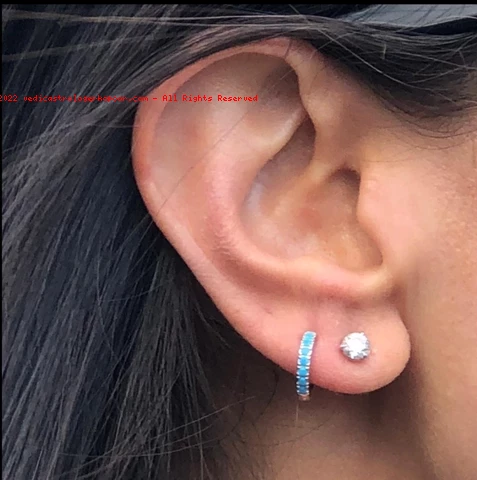New user? Create an account
Feel free to reach out to us for any inquiries or consultations related to Hindu matrimony. We're here to assist you on your journey.
When it comes to choosing the Hindu Matrimonial Sites for Hindus, Vedic Astrologer Kapoor's Hindu matrimony service tops the list. With a focus on astrology and compatibility, Kapoor's service goes beyond the conventional approach of online matchmaking.
Vedic Astrology, also known as Jyotish, is an ancient Indian system of astrology that holds great significance in Hindu culture. Based on the positions of celestial bodies at the time of an individual's birth, Vedic Astrology offers profound insights into their personality, compatibility with potential partners, and overall life path.
In today's digital age, online platforms have become the go-to option for finding a life partner. If you're looking to find a life partner online for free, there are several options available. Let's explore the world of free Hindu matrimonial sites and how they can help you in your quest for love.
Free Hindu matrimonial sites provide a convenient and accessible way to connect with potential life partners. These platforms cater specifically to the Hindu community, ensuring that you meet individuals who share your cultural and religious background.
Extensive Database of Profiles: Free Hindu matrimonial sites boast a vast database of profiles, giving you a wide range of options to choose from. Whether you're looking for someone from your hometown or a different region, these sites offer a diverse pool of potential partners.
Advanced Search Filters: These sites provide advanced search filters, allowing you to narrow down your search based on specific criteria such as age, education, profession, and more. This ensures that you find potential matches that align with your preferences.
Privacy and Security: Free Hindu matrimonial sites prioritize the privacy and security of their users. They employ strict verification processes and robust security measures to ensure a safe and trustworthy platform for individuals to connect.
Easy Communication: These platforms offer various communication tools such as messaging, chat, and video calls, enabling seamless interaction with potential partners. This helps foster meaningful connections and allows you to get to know each other better.
When it comes to Hindu matrimony, brides hold a special place. Adorned in traditional attire, Hindu matrimony brides embody the essence of culture, tradition, and elegance. Let's delve deeper into the significance of Hindu matrimony brides.
Hindu matrimony brides play a crucial role in upholding the cultural and traditional values associated with marriage. They are the epitome of grace, beauty, and devotion, and their presence adds a touch of grandeur to the auspicious occasion.
Hindu matrimony brides embrace the richness of tradition through their wedding attire and rituals. From the vibrant colors of their bridal lehenga to the intricate henna designs on their hands, every aspect of their appearance is steeped in cultural significance.
Hindu weddings are a culmination of various rituals and customs that symbolize the sacred union between two individuals. From the exchange of garlands (varmala) to the circling of the sacred fire (pheras), these rituals form the foundation of a Hindu matrimony.
In Hindu matrimony, grooms represent strength, honor, and commitment. Let's explore the role of Hindu matrimony grooms in the sacred union of marriage.
Hindu matrimony grooms play a pivotal role in the wedding ceremony, embodying the qualities of a responsible partner and provider. They stand as a pillar of support for their brides, promising a lifetime of love, care, and companionship.
Hindu matrimony grooms showcase their cultural heritage through their traditional attire. Whether it's the majestic sherwani or the regal turban, every element of their attire reflects their rich traditions and customs.
To embark on your journey to find a life partner through Hindu matrimony services, it is essential to understand the process of Hindu matrimony login.
Hindu matrimony login involves creating an account on the chosen matrimony platform. This step allows you to access a plethora of profiles, connect with potential partners, and begin your search for a compatible match.
Creating an impressive profile is vital for making a lasting impression on potential partners. Be sure to provide accurate information about yourself, highlight your interests and values, and upload high-quality photographs that reflect your personality.
In your quest for the perfect life partner within the Hindu community, Vedic Astrologer Kapoor's Hindu matrimony service offers a unique and holistic approach. With a deep understanding of Vedic astrology and a commitment to compatibility, Kapoor strives to help individuals find lasting love and happiness. Explore the realm of Hindu matrimony, leverage the power of free Hindu matrimonial sites, and embark on a journey that brings you closer to your soulmate. Trust Vedic Astrologer Kapoor and his expertise to guide you towards a fulfilling and blissful union.
1. Which matrimonial site is best for Hindus?
The best matrimonial site for Hindus is one that caters specifically to the Hindu community, offers a wide database of profiles, prioritizes privacy and security, and provides advanced search filters. Vedic Astrologer Kapoor's Hindu matrimony service is an excellent choice, combining astrology and compatibility in the matchmaking process.
2. How can I find a life partner online for free?
To find a life partner online for free, you can explore various free Hindu matrimonial sites. These platforms provide extensive databases, advanced search filters, and secure communication tools to help you connect with potential partners who share your Hindu beliefs and values.
3. What makes Vedic Astrologer Kapoor's Hindu matrimony service special?
Vedic Astrologer Kapoor's Hindu matrimony service stands out due to its unique approach that combines astrology and compatibility. Kapoor's expertise in Vedic astrology ensures that the matches suggested are not only based on shared interests and values but also on astrological compatibility, increasing the likelihood of a successful and harmonious union.
4. How does Vedic Astrology influence Hindu matrimony?
Vedic Astrology plays a significant role in Hindu matrimony as it provides insights into an individual's personality, compatibility with potential partners, and overall life path. By considering astrological factors, Vedic Astrology helps identify matches that have a higher chance of long-term compatibility and happiness.
5. What are the benefits of using free Hindu matrimonial sites?
Free Hindu matrimonial sites offer a wide range of benefits, including access to a large database of profiles, advanced search filters, privacy and security measures, and easy communication tools. These platforms provide a convenient and reliable way to connect with potential partners who align with your preferences and values.
6. How can I ensure a successful Hindu matrimony?
To ensure a successful Hindu matrimony, it is essential to prioritize open communication, understanding, and mutual respect. Additionally, considering factors like astrological compatibility and shared values can contribute to a harmonious and fulfilling marital life.
New user? Create an account






